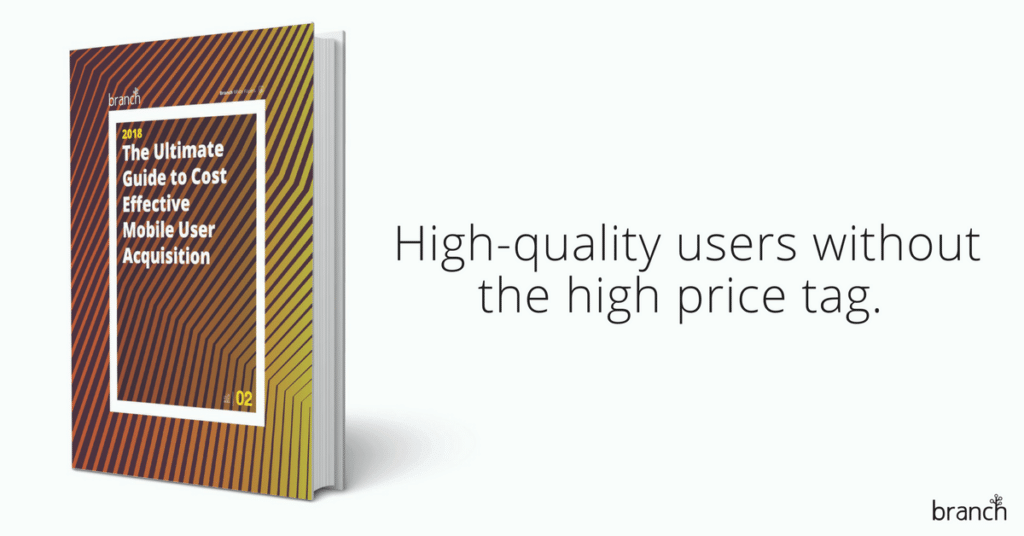
From every standpoint, the mobile app market is increasingly in the world’s spotlight. 2017 carried an astounding $77 billion in projected mobile app revenue, with 197 billion mobile app downloads (compared to 2016’s 149 billion).
Mobile app usage has skyrocketed in the past few years—in fact, an estimated 89% of mobile media time is spent in-app. A study by eMarketer.com suggests daily time users spend in mobile apps has more than doubled since 2012. The average adult reportedly spent 3.1 hours per day on mobile devices in 2017, while adult users on average spent less than an hour per day on mobile in 2012.
In addition, apps also produced better ROI for businesses. Mobile experts estimate that app users spent a whopping 20x more time in-app than mobile web users spent in the mobile web, and that mobile apps converted at rates 3x those of mobile websites. In fact, mobile app downloads are expected to surpass 350 billion by 2021, nearly double 2017’s estimated app download count. Suffice it to say, mobile is taking over the world—and more quickly than almost anyone could’ve predicted.
Given the $22 billion dollar gap between mobile time spend and ad spend shown in Mary Meeker’s 2017 Internet Report, it’s clear that the much-discussed mobile revolution is only beginning. Yet despite the ever-increasing pool of mobile users, it’s becoming more and more difficult both for users to discover new apps and for apps to attract new users. To counteract the increased competition for mobile users’ time and attention, mobile marketers and product managers must come together to plan and execute seamless, engaging user experiences that inspire users to convert, while strategizing more effectively around acquisition campaigns.
With the goal of helping B2C enterprises and emerging mobile brands achieve mobile app growth success, we have put together this comprehensive guide with everything you’ll need to know about mobile user acquisition in 2018.
Why is Mobile Acquisition So Damn Hard?
Mobile Fragmentation
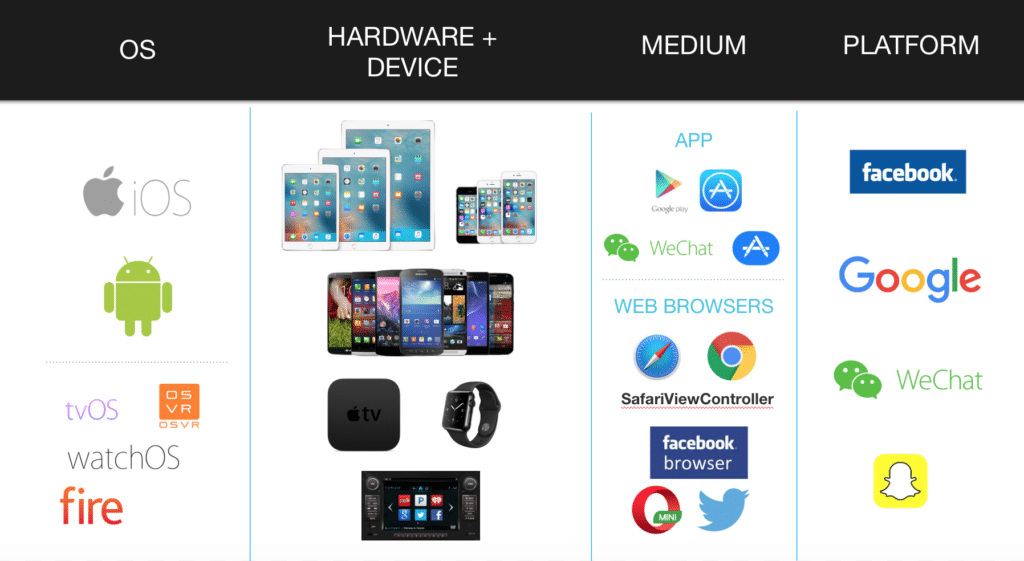 What are the most prevalent issues plaguing mobile app marketers, product managers, and developers in 2018? Let’s start with the undeniable fragmentation rendering the digital ecosystem a series of isolated platforms, channels, and devices that don’t communicate with each other.
What are the most prevalent issues plaguing mobile app marketers, product managers, and developers in 2018? Let’s start with the undeniable fragmentation rendering the digital ecosystem a series of isolated platforms, channels, and devices that don’t communicate with each other.
In this day and age, creating seamless cross-channel and cross-platform mobile user experiences is key, but—as a result of mobile fragmentation—developers must consider quite literally thousands of possibilities. comScore suggests that multi-channel and multi-platform user activity is steeply on the rise, with mobile accounting for nearly 70% of total digital users among the top 1,000 digital media property audiences. In fact, the majority of users today span mobile and desktop platforms, not to mention many browsers, platforms, operating systems, and (of course) devices.
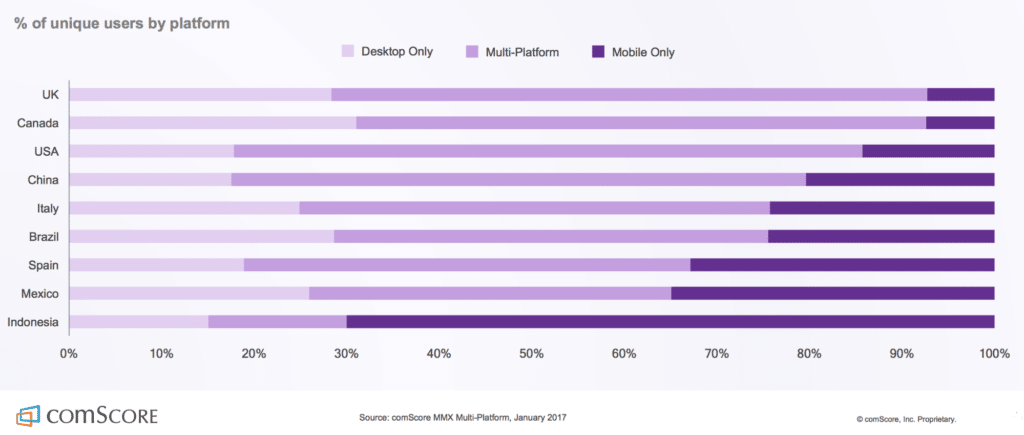
For brands that engage less in the mobile space, this clearly visible trend should act as an urgent call to action, if not also a sobering wake-up call. In order to stay both relevant and competitive in the minds of mobile-first users, brands must integrate solutions that take all permutations of digital user experience into account.
Walled Gardens
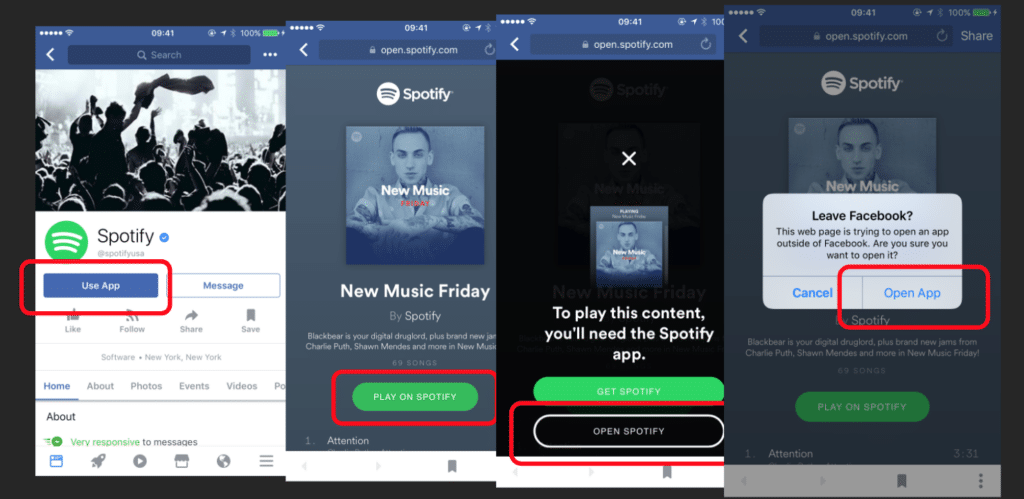
It shouldn’t come as a surprise that social media platforms like Facebook, Twitter, and WeChat do all they can to hold onto users and keep them interacting with their own content. With in-app browsers deployed in these and other high-traffic mobile platforms, external links (say, to your app) are no longer truly external.
This poses a serious problem for mobile brands who depend on social media channels to drive mobile app downloads and engagement over the years. If you can’t get users out of in-app browsers into an owned digital property like your app, how can you capitalize on your users’ value in the long run?
The overwhelming pervasiveness of in-app browsers has ultimately created a deeper need for seamless and reliable web-to-app solutions that offer users the opportunity to travel to your app to view their desired content and continue to engage with your brand. In fact, these solutions are becoming increasingly integral to mobile brands in the wake of Facebook’s controversial “de-emphasization of content from publishers and brands”, announced earlier this year in the New York Times.
The Power Law
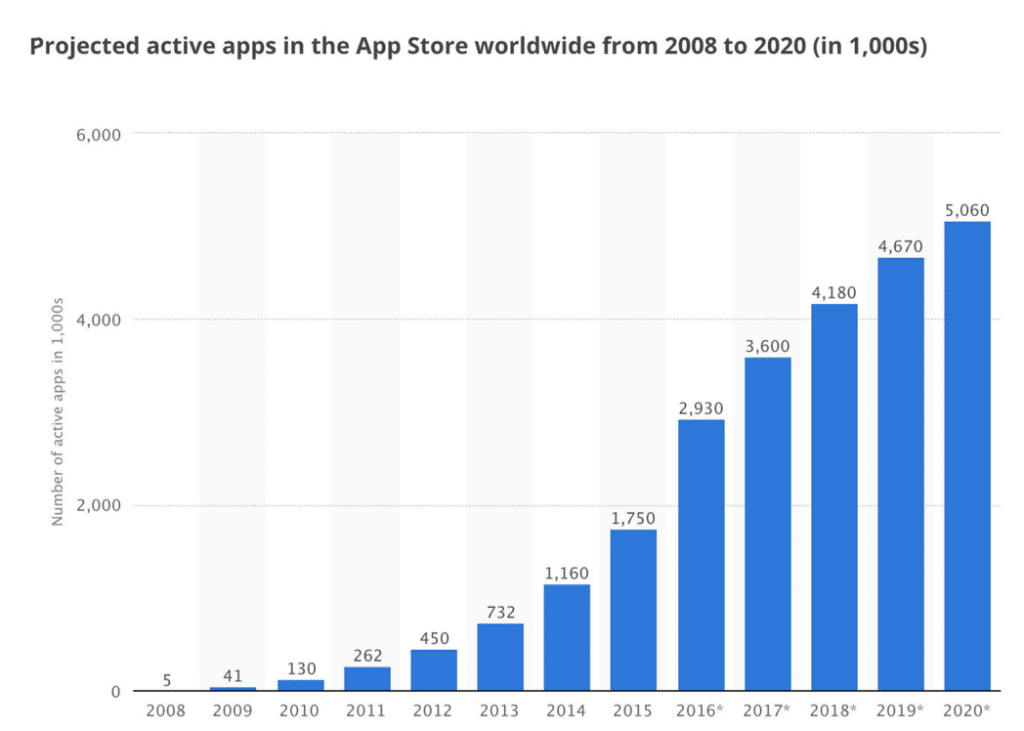
A year ago, Statista reported there were 2.2 million apps in the iOS App Store, and 2.8 million apps in the Google Play Store. Taking into account the explosive growth the mobile industry has since experienced, these numbers can only have increased (likely by a substantial measure). Specifically, Statista estimates that the iOS App Store will see over five million apps by 2020—but that doesn’t mean growth experienced by each app has been (or will be) equal.
To the contrary, there exists an extremely harsh power law in 2018’s App Store. App adoption and monetization are heavily skewed towards the top few apps of each vertical. It’s no wonder Branch co-founder and CEO Alex Austin has developed a term he calls the App Store 99/.01 rule. Austin explains, “The structure and layout of the App Store favors the discovered. The self-reinforcing top charts are the biggest driver of the power law.”
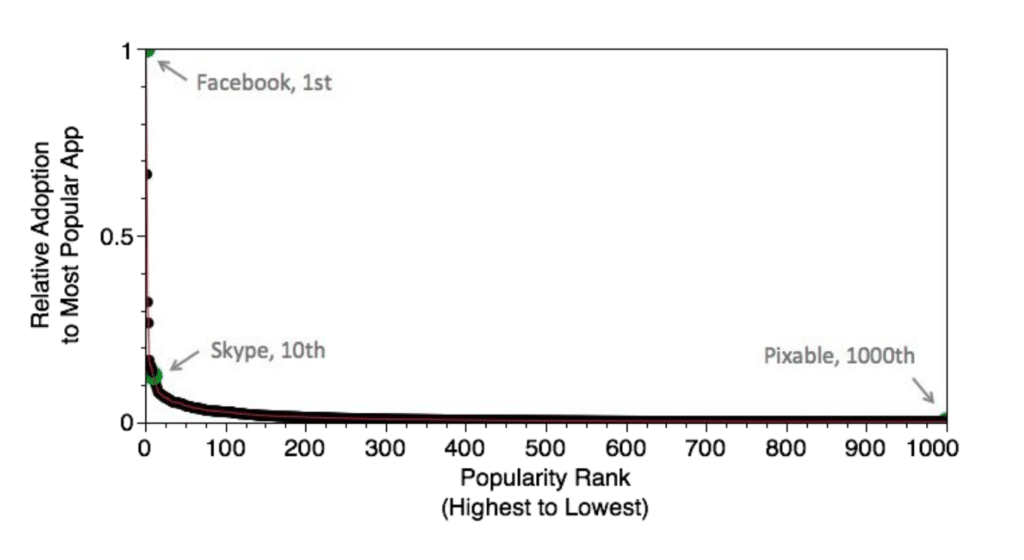
In his article “Mobile App Developers are Suffering”, Austin shares the driving force behind the power law’s expansion in the mobile app ecosystem: the simple notion that discovery favors the discovered. Specifically, Austin points to app store priorities and restrictions of space and memory on mobile devices as main reasons apps that aren’t currently among the most discovered are quickly disadvantaged. In a world in which downloading a new app is in direct competition with (for example) storing photos on phones, it can be difficult to drive even heavily incentivized mobile growth.
To make matters even more challenging for mobile-minded app developers and marketers, time spent by users in apps also adheres to this power law. Studies show that the App Store’s top five apps capture 85% of users’ in-app time, while the millions of remaining App Store apps are left to compete for the 15% of in-app time that’s left.
The power law should be in the back (or front) of every mobile professional’s mind, and remains one of the primary reasons why optimizing for organic and paid acquisition channels is so integral to the success of 2018’s mobile brands.
How to Optimize Paid and Organic Channels for Mobile User Acquisition in 2018
“The Ultimate Guide to Cost-Effective Mobile User Acquisition” includes proven strategies across such channels as email, social media, field marketing & events, ASO, press, and more, and is the result of more than one hundred tips from GoEuro, Redfin, Ticketmaster, Tinder, and many more. With our full guide, you’ll learn how brands like Lord & Taylor and Mint orchestrated highly effective influencer & referral campaigns, and even how you could be overspending on paid measures like Apple Search Ads and App Store Optimization! It’s 2018, and the stakes are too high not to check it out.






















